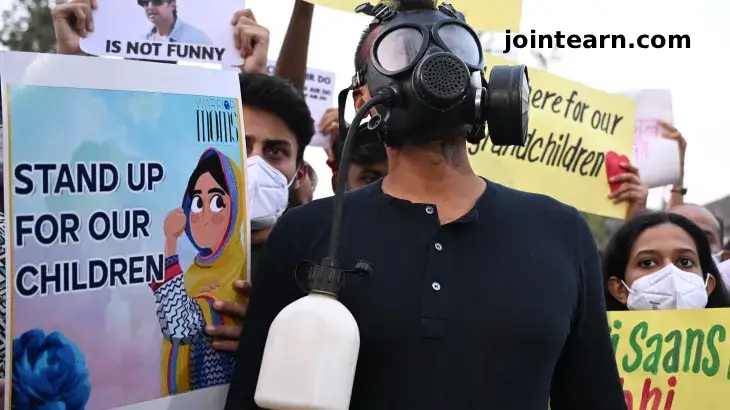
New Delhi, India – November 10, 2025 – Thousands of residents and environmental activists took to the streets of New Delhi over the weekend, demanding urgent action as the Indian capital faced yet another winter smog crisis. The protests highlight growing public concern over the city’s severe air pollution, which has reached levels classified as “very poor” by India’s Central Pollution Control Board (CPCB).
Smog Crisis in the Capital
On Monday morning, New Delhi’s air quality index (AQI) surpassed 350, placing it firmly in the “very poor” category. Certain parts of the city recorded AQI levels exceeding 400, a figure considered severe and hazardous to public health. Cold winter temperatures trap smog in the city, exacerbating exposure to toxic pollutants from multiple sources.
New Delhi ranks among the most polluted capital cities in the world, according to Switzerland-based air quality monitor IQAir, and India accounts for six of the ten most polluted cities globally.
Causes of Annual Smog
Experts attribute the annual surge in pollution to a combination of factors:
- Crop residue burning in neighboring states, producing smoke that drifts into the capital
- Emissions from vehicles, industrial activity, and construction dust
- Cooler winter temperatures that trap pollutants close to the ground
This dangerous mix has severe consequences for public health, contributing to respiratory illnesses, cardiovascular problems, and thousands of premature deaths each year.
Protests and Public Response
On Sunday, demonstrators gathered at India Gate, carrying banners, chanting slogans, and urging the government to enforce stronger anti-pollution measures. Some protesters blocked traffic, prompting police intervention, including detentions and dispersals.
“The right to clean air is a basic human right,” wrote Rahul Gandhi, opposition Congress party leader, criticizing authorities’ handling of the protests.
Government officials, including Environment Minister Manjinder Singh Sirsa, pledged continued efforts to combat pollution, emphasizing emergency measures such as construction restrictions, diesel generator bans, and vehicle entry limits when AQI levels reach hazardous thresholds.
Previous Efforts to Combat Smog
Despite years of interventions, air quality improvements have been limited:
- Crop-burning control subsidies have seen partial success
- Cloud seeding operations aimed at triggering artificial rainfall have failed to significantly reduce smog
- Tiered emergency response systems have helped temporarily, but not long-term
Environmental advocates warn that unless comprehensive policy reforms are implemented, New Delhi will continue to suffer from seasonal smog crises, endangering millions of residents.

Leave a Reply